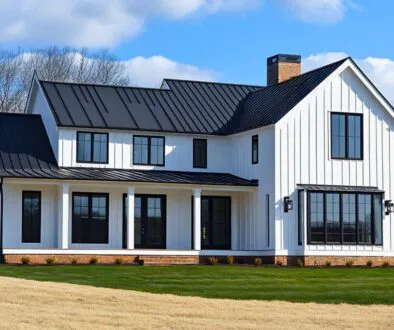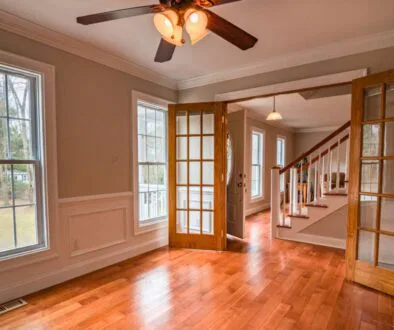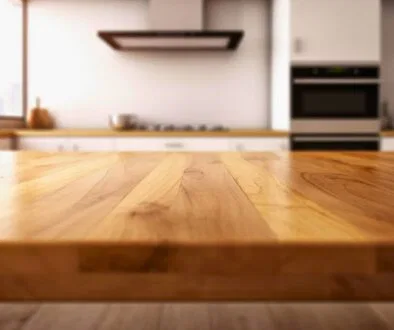7 Principles Of Design: The Blueprint For Great Art
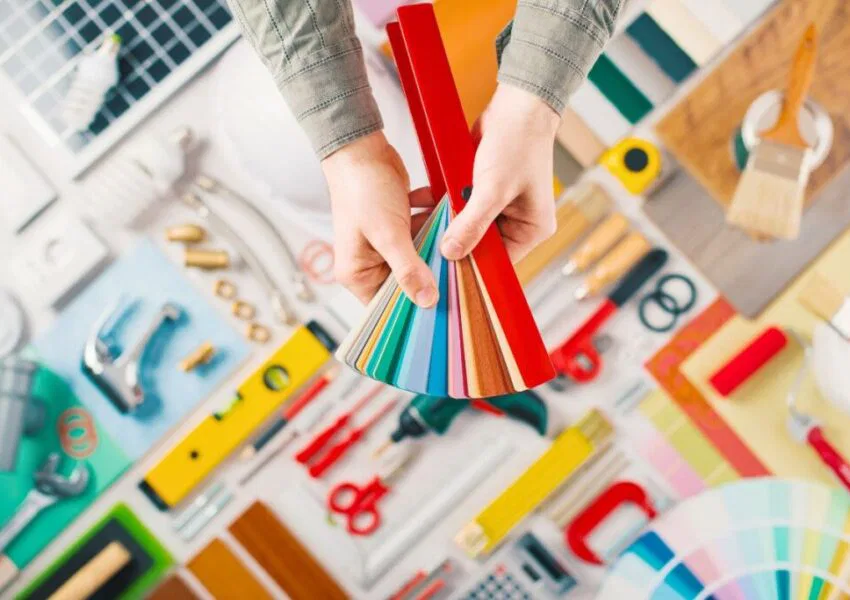
Published April 30, 2025
Are you struggling to create visuals that truly stand out? Good design isn’t just about looks. It’s about creating visuals that communicate clearly and captivate your audience. They should evoke balance and harmony. Whether you’re a graphic designer or interior designer or just want to improve your eye for design, mastering the basics is essential. It’s the key to turning ordinary work into something extraordinary.
In this article, we’ll explore the seven core principles of design. We’ll examine their practical uses and impact on art and visual communication.
What Are The Principles Of Design?
The principles of design are essential guidelines for organizing elements in a composition. They help create visually appealing and balanced designs, ensuring key elements stand out while maintaining harmony in the overall piece.
Elements Vs. Principles Of Design
Understanding the distinction between design elements and principles is crucial. Elements such as line, color, shape, texture, and shape are the tools you use. Principles, however, are the rules for using these tools effectively to craft cohesive and impactful designs. Think of elements as the raw materials and principles as the blueprint that dictates how they come together.
The Role Of Design Principles In Art And Everyday Life
Design shapes our daily experiences, from the layout of a room to product packaging or website interface. Applying design principles ensures creations are functional, intuitive, and visually appealing. Artists, graphic designers, and architects use these principles to create impactful work. Their goal is to connect with audiences and communicate purpose. Design principles are the key to meaningful creations in both art and daily life.
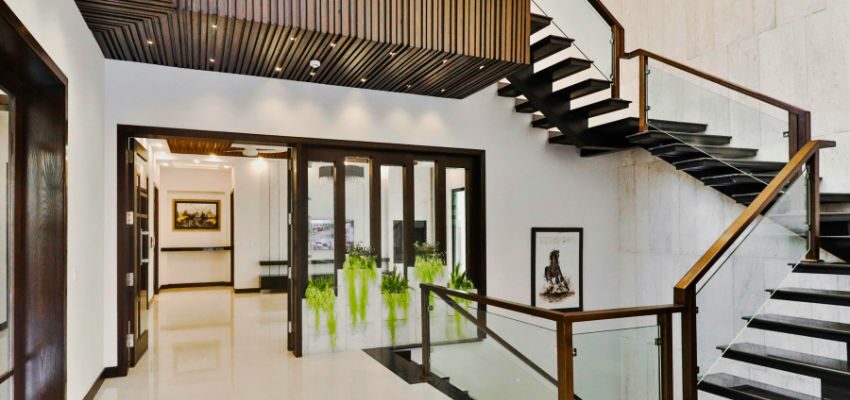
Understanding The 7 Principles Of Design
Design goes beyond mere aesthetics. It’s about crafting visually compelling and harmonious experiences. The 7 principles of design are key to creating strong layouts. These principles make designs effective and impactful. Here’s a breakdown of these principles and how they guide successful design.
Unity — Bringing Design Elements Together
Unity makes a design feel complete and harmonious, ensuring all elements work together seamlessly. It functions as a glue that ties your layout together, creating a cohesive and intentional aesthetic.
Example: A living room with matching furniture, textiles, and decor feels cohesive. A consistent color palette or style creates balance and visual appeal.
Balance — Creating Visual Harmony
Balance is the art of distributing visual weight across a composition to achieve stability and harmony. Factors such as color, texture, and size all play a role in determining this balance. There are two primary types:
- Symmetrical balance. Visual elements are evenly arranged on either side of a central axis, producing a formal and structured appearance.
- Asymmetrical balance. Visual weight is distributed unevenly but still feels cohesive, adding energy and intrigue to a design.
Example: Picture a classic chair with evenly spaced legs for stability (symmetrical). Imagine a modern chair with uneven, angular lines that feel balanced (asymmetrical). Both achieve balance differently.
Emphasis — Guiding Attention To Key Elements
Emphasis is about steering the viewer’s focus toward the most essential part of a design. Designers accomplish this by adjusting size, color, or positioning. Emphasis creates clear focal points and builds a visual hierarchy, ensuring the audience sees the most important information first.
Pro Tip: Think of a clothing brand ad. The brand name is the largest and boldest element. Supporting details, like a sale or product description, are smaller but carefully placed to improve the layout.
Scale — Creating Visual Hierarchy Through Size
Scale is the relative size of elements in a design. It helps establish a hierarchy and highlight key components. By adjusting element sizes, designers can guide the viewer’s focus, making layouts more intuitive and impactful.
Example: On an e-commerce site, a large “Buy Now” button grabs attention. It encourages users to act. Similarly, an oversized sculpture in a museum inspires awe. Its scale highlights its cultural importance.
Contrast — Adding Visual Impact
Contrast involves pairing opposing elements to highlight their differences and draw attention. Balance light and dark tones while using warm and cool colors. Effectively combine thick and thin lines. These elements create a design that stands out and highlights key details.
Practical application: A bold black headline on a white background grabs attention. A photo backdrop with light adds depth and dimension.
Movement And Rhythm — Guiding The Viewer’s Focus And Flow
Movement and rhythm guide the viewer through a design. They direct attention and create a smooth visual flow. Movement directs the eye purposefully using elements like leading lines or curves. For example, a website banner with an arrow pointing to a call-to-action button effectively encourages users to take action.
On the other hand, Rhythm establishes a sense of movement through the repetition and spacing of elements, setting a visual tempo. It comes in various forms:
- Regular Rhythm: Consistent repetition at uniform intervals.
- Flowing Rhythm: Organic patterns that mimic natural movements, like waves.
- Progressive Rhythm: Gradual shifts in size, shape, or color for a sense of progression.
Design Tip: Use movement and rhythm to guide the viewer’s eye. Lead them naturally through your layout or presentation.
Pattern — Repetition That Elevates Design
Pattern is the deliberate repetition of elements to create consistency and harmony in design. This technique uses shapes, colors, and textures to reinforce visual themes. It maintains balance while avoiding clutter.
Real-World Example: Brickwork or tiled flooring uses patterns for more than just aesthetics. These patterns create rhythm and uniformity in design. Similarly, reclaimed wood from Vintage & Specialty Wood adds organic textures. These materials bring depth and visual appeal to modern interiors.
Principles Of Design In Art And Visual Communication
The principles of design are the foundation of art and visual communication. They guide how elements come together to create meaningful work. Whether in fine art, graphic design, or interior design, these principles help artists tell stories, evoke emotions, and create visually engaging experiences.
How Principles Of Design Enhance Fine Art
In fine art, these principles are tools for storytelling and emotional expression. For instance:
- Contrast introduces drama and depth in a painting through the interplay of light and shadow.
- Movement guides the viewer’s eye in a sculpture, encouraging exploration from multiple perspectives.
Applications In Graphic And Interior Design
In graphic design, symmetry, and asymmetry bring energy to logos, ensuring a lasting impression. Interior designers use unity and rhythm to create harmony. They combine textures, colors, and patterns for cohesive, inviting spaces. Reclaimed wood from US Vintage Wood adds rhythm and eco-friendly charm to any room.
Integrating The Elements And Principles Of Design
Grasping design elements and principles is crucial for creating visually impactful work. Understanding how line, shape, color, and texture interact is fundamental. Designers use these elements with principles like balance and emphasis. This creates cohesive designs. Whether new or experienced, these basics are essential for great design.
The Harmony Between Elements And Principles
Every design starts with basic elements—lines that guide the eye, shapes that define focal points, or textures that add depth. When paired with design principles, these elements come to life. For example, using bold colors (an element) combined with strong emphasis (a principle) can create a memorable and striking logo.
Practical Tips For Beginners To Master Design Principles
- Begin with sketches to practice achieving balance and symmetry.
- Create mood boards to maintain consistency in color palettes and themes.
- Experiment with simple contrasts, such as black and white, to explore visual weight and hierarchy.
By honing these skills, you can elevate your designs and bring clarity and purpose to your creative projects.
Frequently Asked Questions
How do the elements and principles of design work together?
Line and color are the building blocks of design. Principles like balance and contrast guide their use. Together, they create cohesive and impactful designs.
What is the most important principle of design?
While every principle has its place, unity is often the key to creating a complete and cohesive design. Without it, a composition can appear fragmented or disorganized, losing its impact and clarity.
How can I incorporate design principles into my projects?
Begin by identifying your audience and understanding the purpose of your project. For branding, prioritize emphasis and unity to create a cohesive and impactful identity. In home decor, focus on balance and pattern to cultivate a warm and inviting ambiance.

Applying Design Principles To Real-World Creativity
Design is more than just an art form—it’s a universal language that conveys ideas, stirs emotions, and shapes experiences. Master the seven principles of design to create work that stands out. These principles help make your designs purposeful and impactful. Whether you’re painting, designing a website, or styling a room, they form the foundation for turning your vision into reality.
Take your designs to the next level with natural, sustainable materials. Reclaimed wood from Vintage & Specialty Wood adds unity, pattern, and balance. It’s perfect for both artistic and functional spaces.
Hire The Timber Experts For Your Next Project
Vintage & Specialty Wood should be your source of the highest quality timbers from around the world. When it comes to fabricating and installing reclaimed wood or specialty wood products in your home, we don’t cut corners. We offer many reclaimed wood and specialty wood products such as Douglas Fir, white oak, and much more. We also offer timber framing and wood flooring services as well. Contact our team today to speak to a timber expert about what Vintage & Specialty Wood can do for you.

This Blog Is Fact Checked
This content has undergone meticulous fact-checking by our team of internal experts. Gain a deeper understanding of the high editorial standards we uphold on our website here.

About The Author
Experience, exploration, and knowledge are the hallmarks of writer Rei Bayucca. Her dedication to crafting articles that both inspire and educate will leave you thinking long after you’ve finished reading.

